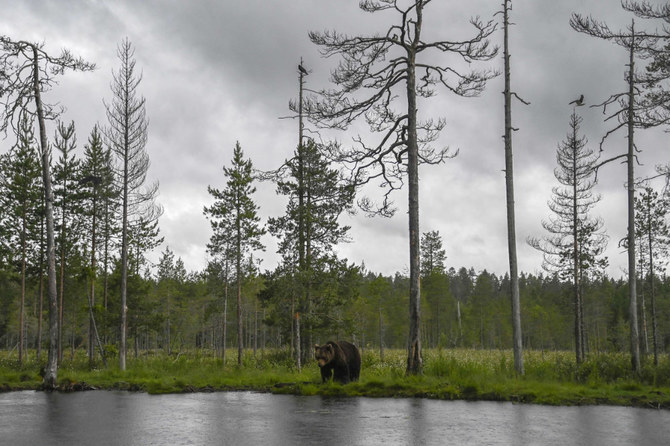
The conventional wisdom about the ongoing chill in China-EU ties, which dates back to at least the COVID-19 pandemic, is that it may now be irreversible. However, not all of the bilateral relationship is in the deep freeze.
For at least a decade, Beijing and Brussels have had very fruitful bilateral conversations on global warming issues. So much so, in fact, that the EU Emissions Trading System was very influential in China’s design of its own carbon markets.
European Commission Vice President Frans Timmermans, who heads up green policy for the EU, highlighted this warmth in 2021 when referring to the “good partnership” in this area. In recent days, during his latest visit to Beijing for the EU-China High-level Environment and Climate Dialogue, it is therefore perhaps unsurprising that Timmermans said he is “convinced that China is willing to go in the right direction” in tackling climate change, despite growing concerns to the contrary.
Its critics have included nongovernmental organizations such as Greenpeace, which highlighted this week that Beijing has approved a major surge in coal power this year, with the fear that it is prioritizing energy supply over reducing greenhouse gas emissions. China relied on coal for nearly 60 percent of its electricity in 2022 (official plans have called for boosting coal production capacity by 300 million tons), at least the third consecutive year of growth. And the further increase in approvals for coal-fired power plants has added to worries that China might backtrack on its ambitions to peak emissions between 2026 and 2030 before achieving carbon neutrality by 2060.
EU decision-makers such as Timmermans are acutely aware of China’s challenge here. They appear to have concluded that the best way to incentivize their counterparts in Beijing on this agenda is encouragement, rather than condemnation.
The European assumption is that Beijing needs to be in the tent on climate issues rather than left outside. China is by a long way the largest national emitter of greenhouse gases (accounting for about a third of global emissions) and international action to tackle climate change is greatly weakened without Beijing on board.
Many EU officials have long believed that, fundamentally, Chinese policymakers share a vision with Europe of a prosperous, energy-secure future in a stable climate and recognize the need for bilateral collaboration. After all, global warming poses a massive environmental threat to China, from record-setting heat waves to flooding.
The European assumption is that Beijing needs to be in the tent on climate issues rather than left outside.
Andrew Hammond
In recent days, China’s main climate center announced that the first half of 2023 has seen a record number of high-temperature days. Beijing last month recorded its hottest June day ever and much of northern China endured temperatures above 40 degrees Celsius. Meanwhile, sustained heavy rainfall in central and southern areas has caused severe flooding in recent days, with more than 14,000 people forced to evacuate their homes in Hunan Province alone.
The centerpiece of EU-Chinese cooperation on this agenda is the 2015 EU-China climate change declaration, which was one of the key drivers of the global warming deal agreed in Paris in December of that year. Under this declaration, both parties agreed to cooperate on developing a cost-effective low-carbon economy, including intensifying cooperation on domestic mitigation policies, carbon markets, low-carbon cities, greenhouse gas emissions from the aviation and maritime industries, and hydrofluorocarbons.
Amid all the challenges around climate change, both Chinese and EU policymakers still see — with the appropriate vision and commitment — the potential for massive win-win opportunities on the horizon as a result of accelerating the transition to a low-carbon future. And this collaboration looks set to deepen, including on emissions trading, with Beijing’s rollout of a nationwide emissions trading system.
China’s planned investment in the green economy is staggering — a fact that the EU is increasingly recognizing. For instance, China is the world’s biggest and fastest-growing producer of renewable energy and it aims to make a third of its total power supply renewable by 2025. This investment is buttressed by Beijing’s policy commitments on the climate, clean air and energy agendas.
Europe has clear strengths in this area that China needs. As the latter continues on a trajectory to potentially become the world’s largest economy, there are thus substantial commercial opportunities for European-based players.
European technology and science firms are leaders on much of this clean technology agenda. For instance, as the UK renews its own energy infrastructure, the opportunities for its companies in China are enormous.
Importantly, this collaboration will not just be one-way traffic. Indeed, China is already the world’s largest manufacturer and user of solar panels and the largest investor in renewable energy, and it is increasingly possible that the technology transfer will be a two-way process.
There is still a long way to go before China has a full-fledged carbon market and both parties have yet to lock in new low-carbon standards in key industrial sectors. However, the direction of travel is clear: Cooperation could build low-carbon industries in a range of sectors and also align Europe more closely to the world’s future largest economy.
Taken together, it is therefore clear that both the EU and China have much to gain from a deep partnership on this agenda, but the window of opportunity to collaborate may not remain open indefinitely. So, now is the time to intensify cooperation and help define the landscape of the 21st century’s clean energy economy.
• Andrew Hammond is an Associate at LSE IDEAS at the London School of Economics.












